Archives
- 2025-12
- 2025-11
- 2025-10
- 2025-09
- 2025-04
- 2025-03
- 2025-02
- 2025-01
- 2024-12
- 2024-11
- 2024-10
- 2024-09
- 2024-08
- 2024-07
- 2024-06
- 2024-05
- 2024-04
- 2024-03
- 2024-02
- 2024-01
- 2023-12
- 2023-11
- 2023-10
- 2023-09
- 2023-08
- 2023-07
- 2023-06
- 2023-05
- 2023-04
- 2023-03
- 2023-02
- 2023-01
- 2022-12
- 2022-11
- 2022-10
- 2022-09
- 2022-08
- 2022-07
- 2022-06
- 2022-05
- 2022-04
- 2022-03
- 2022-02
- 2022-01
- 2021-12
- 2021-11
- 2021-10
- 2021-09
- 2021-08
- 2021-07
- 2021-06
- 2021-05
- 2021-04
- 2021-03
- 2021-02
- 2021-01
- 2020-12
- 2020-11
- 2020-10
- 2020-09
- 2020-08
- 2020-07
- 2020-06
- 2020-05
- 2020-04
- 2020-03
- 2020-02
- 2020-01
- 2019-12
- 2019-11
- 2019-10
- 2019-09
- 2019-08
- 2019-07
- 2019-06
- 2019-05
- 2019-04
- 2018-07
-
Direct inhibition of LO activity by BRP is
2022-12-13
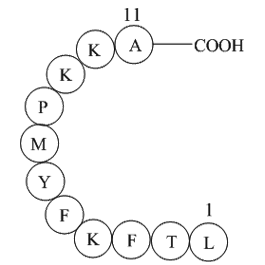
Direct inhibition of 5-LO activity by BRP-187 is clearly evident in cell-free assays using PMNL homogenates and isolated human recombinant 5-LO as enzyme source. In such assays, pure FLAP inhibitors like MK886 are inactive [9], [10], [29], [44]. Wash-out experiments and studies using the nonionic d
-
Given the recent discovery of
2022-12-13
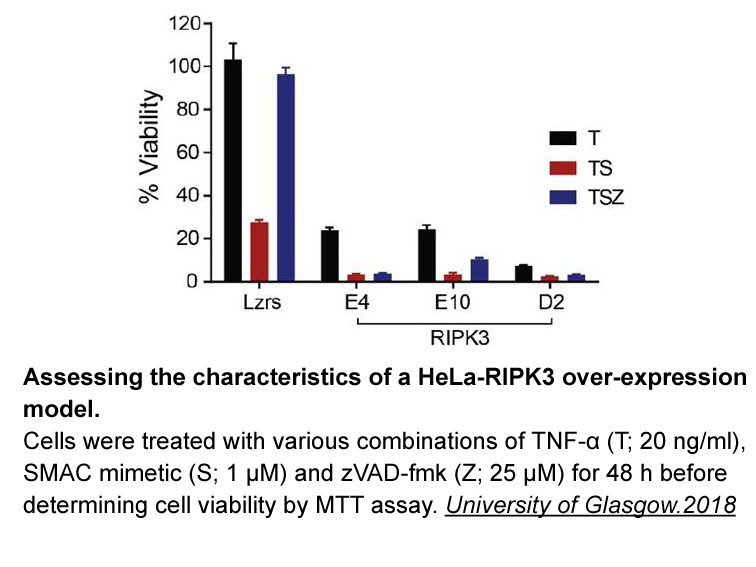
Given the recent discovery of regions of single-stranded DNA in the nuclei of hypoxic cells, the role for ATR in the response to hypoxic stress seems clearer . Zou and Elledge demonstrated that both Ddc 2 (the homolog of ATRIP) and ATRIP have a lower affinity for double-strand breaks than they do f
-
br ASK in multiple sclerosis and
2022-12-13
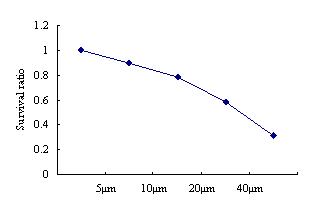
ASK1 in multiple sclerosis and optic neuritis Multiple sclerosis (MS), a chronic inflammatory demyelinating disease of the central nervous system (CNS), is the most common neurological disease among young adults in the United States and Europe (Dutta and Trapp, 2011). Although MS primarily affect
-
BITC significantly enhanced the gene
2022-12-13

BITC significantly enhanced the gene expression of the Nrf2-dependent genes, such as NQO1 and HO-1 (Fig. 4), as well as the ALDH genes (Fig. 2). Nrf2 is a key transcriptional factor which activates the expression of the genes that contain ARE in their promoter. Nrf2 translocates to the nucleus where
-
PKA signalling in the http www apexbt com media
2022-12-13
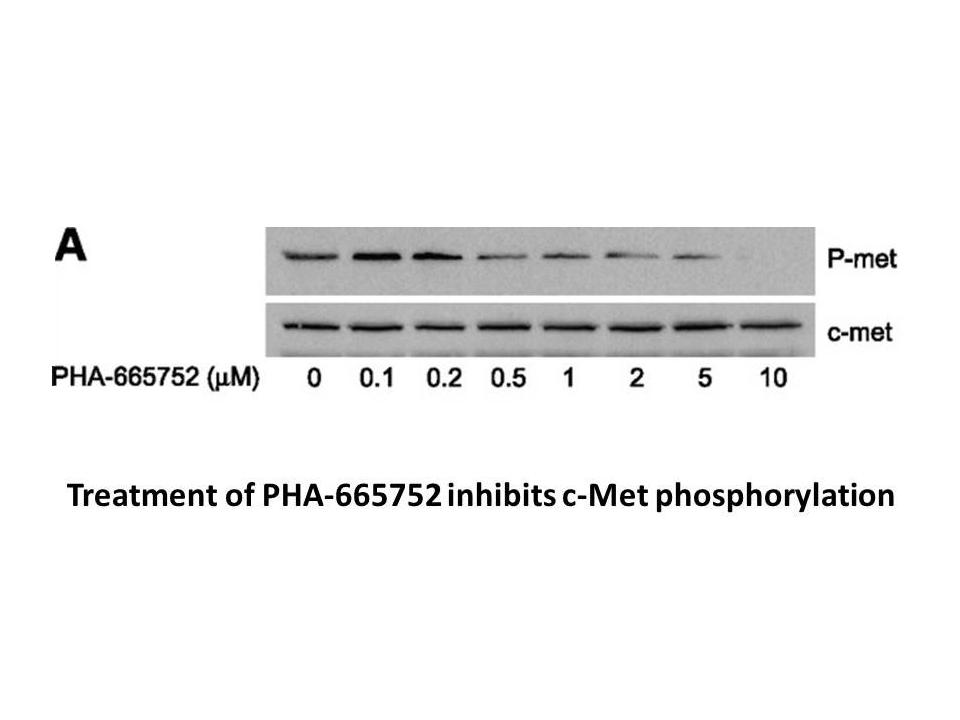
PKA signalling in the nucleus was thought to be due to the translocation of the catalytic subunit upon activation from the 2111 mg to the nucleus via diffusion [72]. However, a new understanding has emerged, as both the regulatory and catalytic subunits have been identified in the nucleus and funct
-
Based on the observation that antipsychotic drugs increase H
2022-12-13
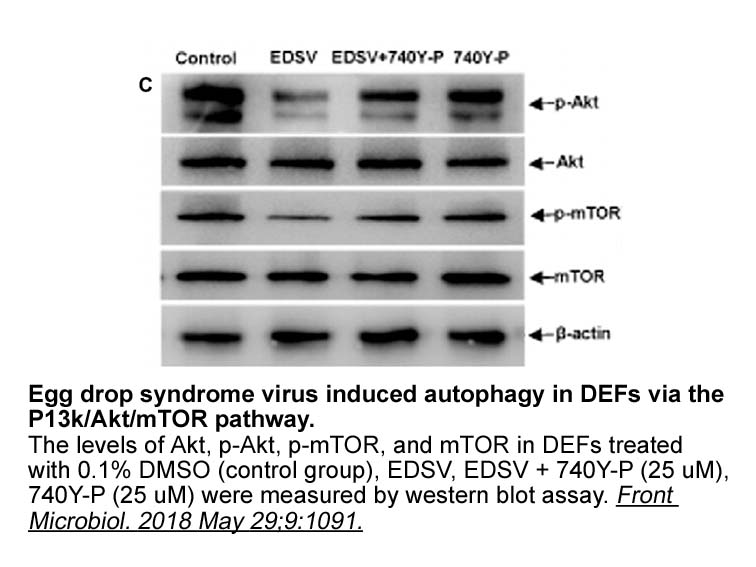
Based on the observation that antipsychotic drugs increase 5-HT1A–D2 heteromerization level (Łukasiewicz et al., 2016), we set out to compare the effect of paroxetine to that of risperidone. Paroxetine, a potent SSRI, is very effective in the treatment of depression and anxiety disorders, e.g., gene
-
br Antioxidative stress and anti inflammation Oxidative
2022-12-12
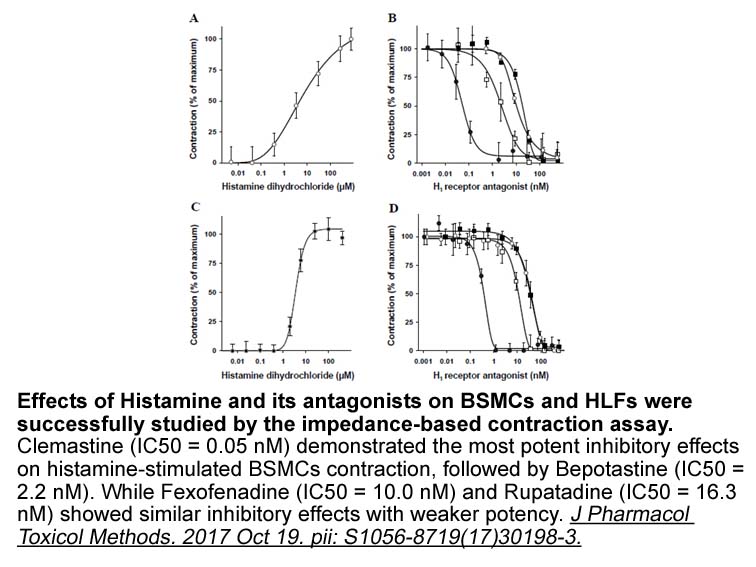
Antioxidative stress and anti-inflammation Oxidative stress is a major cause of reduced endothelial NO bioavailability in hypertension, and inflammatory response is thought to play an important role in these processes (Blake and Ridker, 2001, Landmesser et al., 2006). Reactive oxygen species (ROS
-
The AAP s policy statement on childhood adversities
2022-12-12
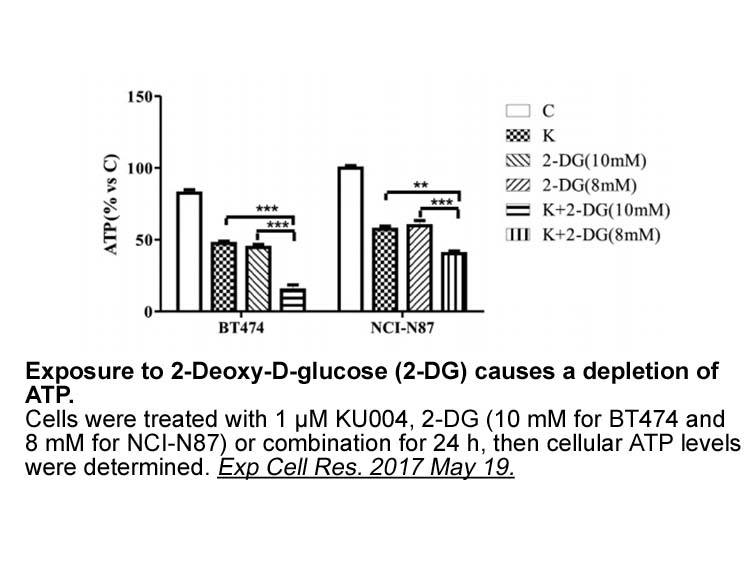
The AAP’s policy statement on childhood adversities is a call to the pediatric ap5 to apply the knowledge toward developmental screening in clinical practice. It is a movement to increase education around childhood adversity as a public health crisis and to build trauma-informed care into pediatric
-
The relatively high concentration of HT used in this study
2022-12-12
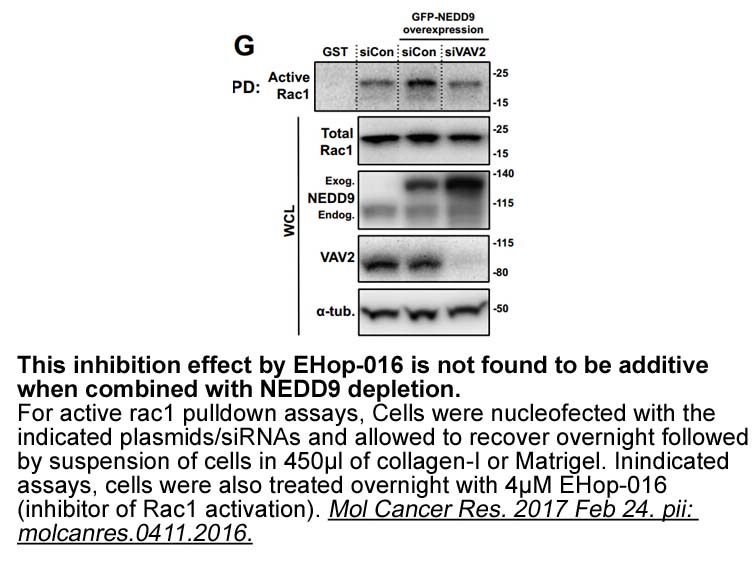
The relatively high concentration of 5-HT used in this study (100 µM) is consistent with the concentrations used in other published ex vivo studies (Ropert and Guy, 1991, Passani et al., 1994, Shen and Andrade, 1998). In our paradigm 5-HT was focally applied at the surface of the slice via a fast pe
-
In conclusion we have produced some highly potent inhibitors
2022-12-12
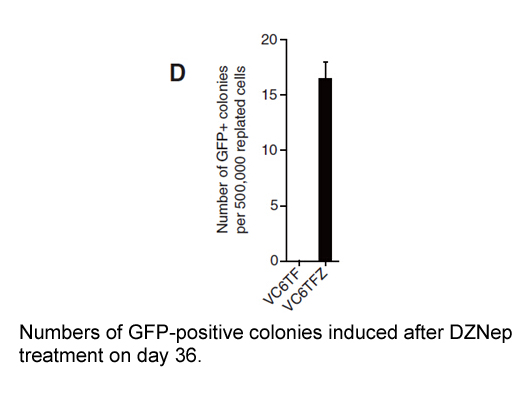
In conclusion, we have produced some highly potent inhibitors of P450 in comparison to the standard protoporphyrin ix KTZ. Also, due to the limited specificity of these compounds against lyase in comparison to the 17α-OHase component, these compounds would be expected to have a major impact on cort
-
In the current study SA was
2022-12-12
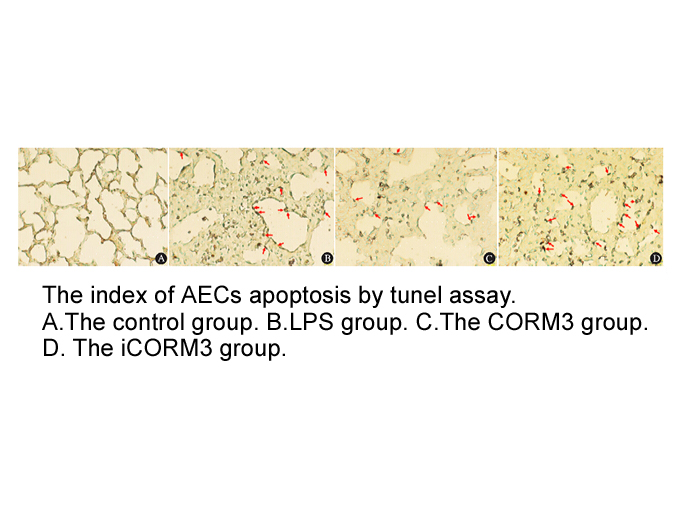
In the current study, SA was assessed to confirm the safety of CS addition to erythrocytes SA as well as SA elicits antioxidant action. It has been reported that, ROS induced desialylation by depletion of SA content from cell surfaces (Pawluczyk et al., 2014, Harisa, 2015). Therefore, significant de
-
br Conclusions br Funding This
2022-12-12
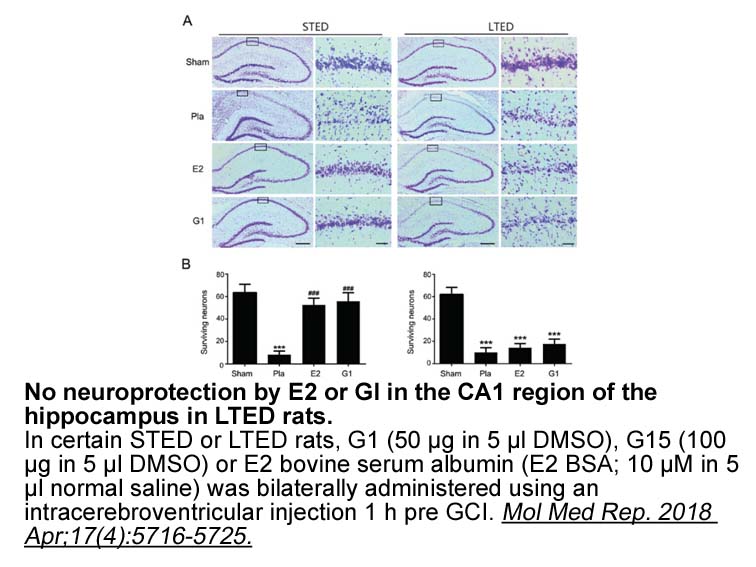
Conclusions Funding This work was supported by a Finnish government subsidy for health science research [grant numbers TYH2012141, TYH 2013218, and TYH 2014216]; the SSAC Foundation [grant numbers SLS-504141 and SLS-693781]; and the Paulo Foundation. The funding sources had no involvement in s
-
Calcium entry through postsynaptic NMDARs
2022-12-12
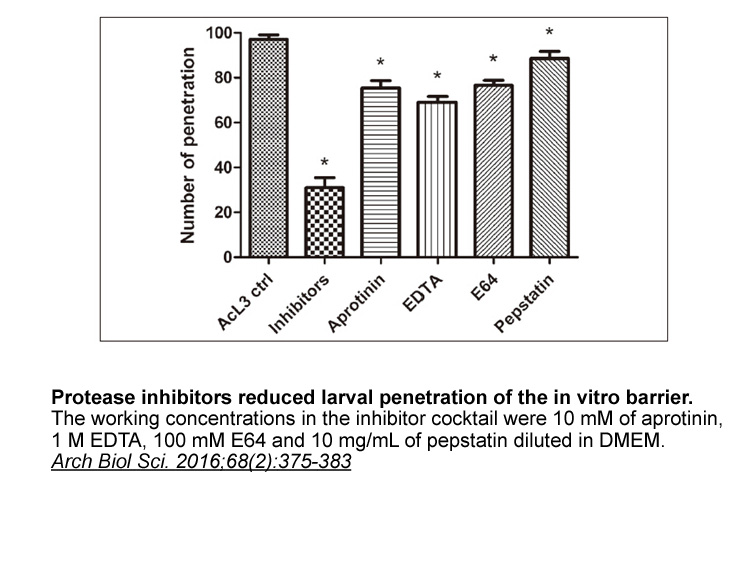
Calcium entry through postsynaptic NMDARs activates intracellular signaling cascades including Ca2+/calmodulin (CaM)-dependent protein kinase II (CaMKII) and calcineurin. The spatiotemporal abundance of this Ca2+/CaM complex determines the direction of synaptic plasticity, resulting in LTP (Malinow
-
br Discussion Elevated blood BCAA levels are a
2022-12-12
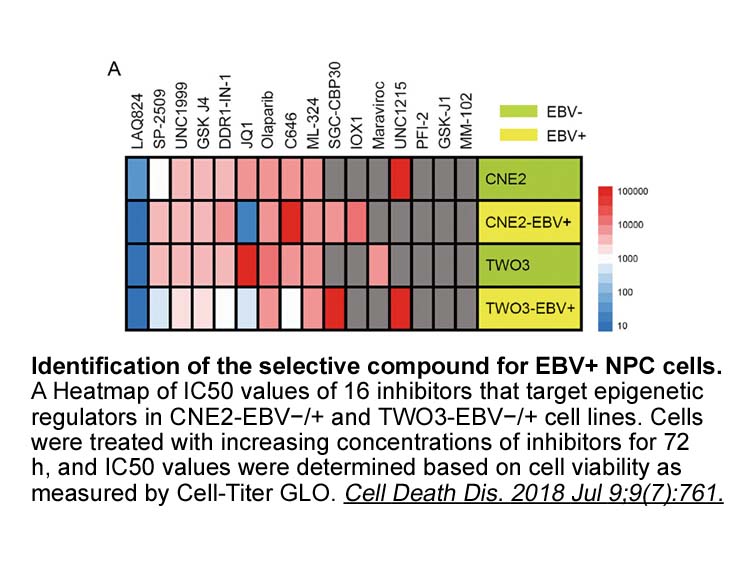
Discussion Elevated blood BCAA levels are a common feature of a developed pathophysiological state characterized by obesity and IR [4]. It has been suggested that this profile is part of a panel of biomarkers able to predict the onset of more severe complications like diabetes in humans [14]. In
-
Imaging QTL studies may have
2022-12-12
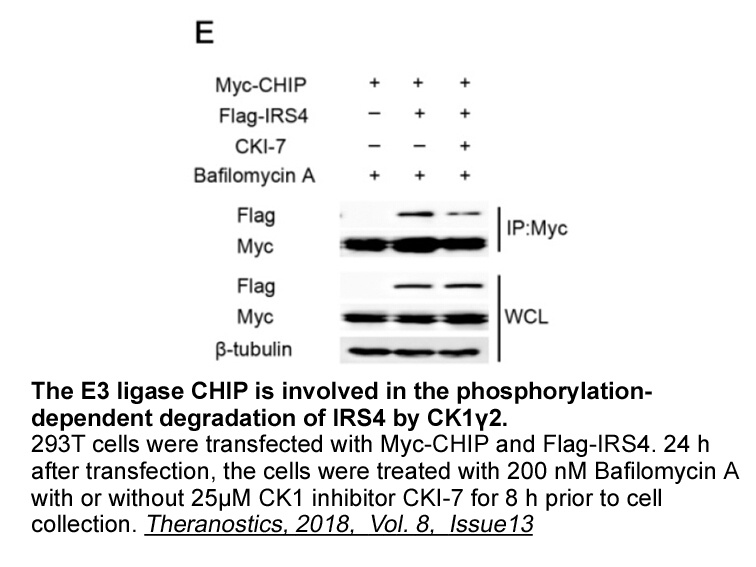
Imaging QTL studies may have several potential advantages over case-control studies, including increased power . Imaging endophenotypes of disease in QTL studies can separate patients and normal subjects more accurately and therefore limit the confound of including asymptomatic subjects in the contr
15948 records 370/1064 page Previous Next First page 上5页 366367368369370 下5页 Last page